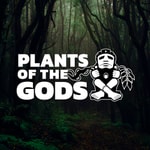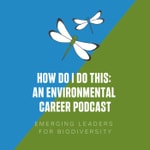Mongabay Explores – Détails, épisodes et analyse
Détails du podcast
Informations techniques et générales issues du flux RSS du podcast.

Mongabay Explores
Mongabay.com
Fréquence : 1 épisode/33j. Total Éps: 36

Classements récents
Dernières positions dans les classements Apple Podcasts et Spotify.
Apple Podcasts
🇫🇷 France - nature
20/07/2025#90🇫🇷 France - nature
19/07/2025#76🇫🇷 France - nature
18/07/2025#75🇫🇷 France - nature
17/07/2025#65🇫🇷 France - nature
16/07/2025#57🇫🇷 France - nature
15/07/2025#46🇫🇷 France - nature
14/07/2025#35🇫🇷 France - nature
13/07/2025#27🇫🇷 France - nature
12/07/2025#20🇬🇧 Grande Bretagne - nature
10/07/2025#91
Spotify
Aucun classement récent disponible
Liens partagés entre épisodes et podcasts
Liens présents dans les descriptions d'épisodes et autres podcasts les utilisant également.
See all- https://news.mongabay.com/
198 partages
- https://news.mongabay.com
195 partages
- http://www.patreon.com/mongabay
384 partages
- https://apps.apple.com/us/app/id1524511006
300 partages
Qualité et score du flux RSS
Évaluation technique de la qualité et de la structure du flux RSS.
See allScore global : 83%
Historique des publications
Répartition mensuelle des publications d'épisodes au fil des années.
Congo Basin, Bonus: Pollution & impunity in the DRC
Saison 4 · Épisode 7
lundi 13 mai 2024 • Durée 11:47
Congo Basin, Part 6: How the Congo Rainforest is shaped by elephants
Saison 4 · Épisode 6
mardi 7 novembre 2023 • Durée 38:23
Image Credit: Forest elephants, pictured in Central African Republic. Photo ©Cristián Samper/WCS
New Guinea, Part 6: Who is destroying these rainforests? The Tanah Merah mystery.
Saison 3 · Épisode 6
mercredi 13 avril 2022 • Durée 48:19
We speak with Philip Jacobson, senior editor at Mongabay, and Bonnie Sumner, investigative reporter at the Aotearoa New Zealand news outlet Newsroom, to discuss the project from inception to present day, the involvement of a New Zealand businessman, and where the project could go next.
Related Reading:
- The Secret Deal to Destroy Paradise
- New Zealand developer denies key role in giant palm oil project in Indonesia
If you missed the first five episodes of Mongabay Explores New Guinea, you can find them via the podcast provider of your choice, or locate all episodes of the Mongabay Explores podcast on our podcast homepage here.
Episode Artwork: An Indigenous Auyu man and child in Boven Digoel. Image by Nanang Sujana for The Gecko Project.
Sounds heard during the intro and outro include the following: rusty mouse-warbler, growling riflebird, raggiana/lesser bird-of-paradise, superb fruit-dove, long-billed honeyeater, little shrike-thrush, brown cuckoo-dove, black-capped lory. Special thanks to Tim Boucher and Bruce Beehler for identifying them.
Please invite your friends to subscribe to Mongabay Explores wherever they get podcasts. If you enjoy our podcast content, please visit www.patreon.com/mongabay to pledge a dollar or more to keep the show growing, Mongabay is a nonprofit media outlet and all support helps!
See all our latest news from nature's frontline at Mongabay's homepage: news.mongabay.com or find us on Facebook, Twitter, Instagram and TikTok by searching for @mongabay.
Feedback is always welcome: submissions@mongabay.com.
New Guinea, Part 5: 'Ghosts of the rainforest'
Saison 3 · Épisode 5
mercredi 16 mars 2022 • Durée 58:02
For this episode of the podcast, we speak with Jim Thomas of the Tenkile Conservation Alliance and Lisa Dabek and Modi Pontio of the Tree Kangaroo Conservation Program. They detail the successes and challenges of working for nearly two decades in PNG to conserve these intelligent marsupials and the lands they inhabit.
If you missed the first four episodes of Mongabay Explores New Guinea you can find them via the podcast provider of your choice or find all the episodes of the Mongabay Explores podcast on our podcast homepage here.
Episode Artwork: A Matschie's tree kangaroo in the Wasaunon Field site in the YUS Conservation Area in Morobe Province in PNG. Image by Jonathan Byers. Courtesy of the Tree Kangaroo Conservation Program.
Sounds heard during the intro and outro include the following: rusty mouse-warbler, growling riflebird, raggiana/lesser bird-of-paradise, superb fruit-dove, long-billed honeyeater, little shrike-thrush, brown cuckoo-dove, black-capped lory. Special thanks to Tim Boucher and Bruce Beehler for identifying them.
Please invite your friends to subscribe to Mongabay Explores via Apple Podcasts or wherever they get podcasts. If you enjoy our podcast content, please visit www.patreon.com/mongabay to pledge a dollar or more to keep the show growing, Mongabay is a nonprofit media outlet and all support helps!
See all our latest news from nature's frontline at Mongabay's homepage: news.mongabay.com or find us on Facebook, Twitter, Instagram and TikTok by searching for @mongabay.
Feedback is always welcome: submissions@mongabay.com.
New Guinea, Part 4: A long and winding road
Saison 3 · Épisode 4
mercredi 2 mars 2022 • Durée 46:02
While the project is nearly complete, experts warn it will cost billions annually to maintain, and threaten to open up untouched rainforest to palm oil expansion contributing an additional 4.5 million hectares of deforestation by 2036.
For this episode, we interviewed David Gaveau, founder of The TreeMap and Bill Laurance, distinguished professor, and director of the Center for Tropical, Environmental, and Sustainability Science at James Cook University in Australia.
Both experts explained the environmental, financial, and social costs of the project, which runs through Indonesia’s Lorentz National Park, a UNESCO World Heritage Site.
If you missed the first three episodes of Mongabay Explores New Guinea you can find it via the podcast provider of your choice or find all the episodes of the Mongabay Explores podcast on our podcast homepage here.
Episode Artwork: A part of the Trans Papua highway that snakes across Indonesia's easternmost provinces Papua and West Papua. Photo courtesy of Public Works and Housing Ministry.
Editor's Note: Bill Laurance, is a Distinguished Research Professor at James Cook University in Cairns, Australia as well as the founder and director of ALERT (Alliance of Leading Environmental Researchers & Thinkers) and a member of Mongabay’s advisory board.
Sounds heard during the intro and outro include the following: rusty mouse-warbler, growling riflebird, raggiana/lesser bird-of-paradise, superb fruit-dove, long-billed honeyeater, little shrike-thrush, brown cuckoo-dove, black-capped lory. Special thanks to Tim Boucher and Bruce Beehler for identifying them.
Please invite your friends to subscribe to Mongabay Explores wherever they get podcasts. If you enjoy our podcast content, please visit www.patreon.com/mongabay to pledge a dollar or more to keep the show growing, Mongabay is a nonprofit media outlet and all support helps!
See all our latest news from nature's frontline at Mongabay's homepage: news.mongabay.com or find us on Facebook, Twitter, Instagram and TikTok by searching for @mongabay.
Feedback is always welcome: submissions@mongabay.com.
New Guinea, Part 3: Defending paradise
Saison 3 · Épisode 3
mercredi 16 février 2022 • Durée 51:51
Because of its one-of-a-kind biodiversity, and relatively undeveloped landscape, New Guinea is in a unique position to conserve its forest cover as part of an economy that serves its local inhabitants, rather than extracting from and deforesting these communities.
For this third episode of the New Guinea season, Mongabay interviews Bustar Maitar, CEO of EcoNusa, and biologist Edwin Scholes from the Cornell Lab of Ornithology about the diverse and charismatic birds-of-paradise and the potential for New Guinea to harness ecotourism to power a sustainable economy.
If you missed the first two episodes of Mongabay Explores New Guinea you can find it via the podcast provider of your choice or find all the episodes of the Mongabay Explores podcast on our podcast homepage here.
Episode Artwork: A Cendrawasih (bird of paradise) on a tree in Malagufuk village, located in the rainforest in Kalasou valley, Sorong, West Papua. Copyright: Jurnasyanto Sukarno/Greenpeace
Sounds heard during the intro and outro include the following: rusty mouse-warbler, growling riflebird, raggiana/lesser bird-of-paradise, superb fruit-dove, long-billed honeyeater, little shrike-thrush, brown cuckoo-dove, black-capped lory. Special thanks to Tim Boucher and Bruce Beehler for identifying them.
Please invite your friends to subscribe to Mongabay Explores wherever they get podcasts. If you enjoy our podcast content, please visit www.patreon.com/mongabay to pledge a dollar or more to keep the show growing, Mongabay is a nonprofit media outlet and all support helps!
See all our latest news from nature's frontline at Mongabay's homepage: news.mongabay.com or find us on Facebook, Twitter, Instagram and TikTok by searching for @mongabay.
Feedback is always welcome: submissions@mongabay.com.
New Guinea, Part 2: 'Carbon cowboys' and illegal logging
Saison 3 · Épisode 2
mardi 1 février 2022 • Durée 54:05
For this episode of Mongabay Explores we interview Gary Juffa, governor of Oro province in Papua New Guinea, and investigative journalist, Rachel Donald.
If you missed episode one of Mongabay Explores New Guinea you can find it via the podcast provider of your choice or find all the episodes of the Mongabay Explores podcast on our podcast homepage here.
Episode artwork: Greenpeace activists paint 'Forest Destruction',' Climate Crime' and 'Moratorium Now' on barges of illegally felled trees. The logs wait on Paia Port waterways - prevented from being loaded onto the 'Harbour Gemini' ship in the rainforests of the 'Turama extension' logging concession, Gulf Province. Image by Jeremy Sutton-Hibbert for Greenpeace.
Sounds heard during the intro and outro include the following: rusty mouse-warbler, growling riflebird, raggiana/lesser bird-of-paradise, superb fruit-dove, long-billed honeyeater, little shrike-thrush, brown cuckoo-dove, black-capped lory. Special thanks to Tim Boucher and Bruce Beehler for identifying them.
Please invite your friends to subscribe to Mongabay Explores wherever they get podcasts. If you enjoy our podcast content, please visit www.patreon.com/mongabay to pledge a dollar or more to keep the show growing, Mongabay is a nonprofit media outlet and all support helps!
See all our latest news from nature's frontline at Mongabay's homepage: news.mongabay.com or find us on Facebook, Twitter, Instagram and TikTok by searching for @mongabay.
Feedback is always welcome: submissions@mongabay.com.
New Guinea, Part 1: Protecting unparalleled biodiversity
Saison 3 · Épisode 1
mercredi 5 janvier 2022 • Durée 01:15:07
To unpack the vast biodiversity of New Guinea, conservation policy, and NGO efforts to protect land, culture and Indigenous rights, we spoke with Rodrigo Cámara-Leret, of the Department of Evolutionary Biology and Environmental Studies at the University of Zurich, Charlie Danny Heatubun, head of the research and development agency of the provincial government of West Papua, and Miriam Supuma of Synchronicity Earth.
In this third season of the podcast, we take a look at what makes New Guinea unlike any other place in this world, the contributing environmental impacts that threaten its culture and biodiversity, and what is being done to protect it.
Listen to the previous 2 seasons of Mongabay Explores via the podcast provider of your choice or find them at our podcast homepage here.
Episode artwork: The stocky, flightless northern cassowary (Casuarius unappendiculatus) is one of the majestic birds that New Guinea is famous for. Image by Rhett Butler for Mongabay.
Sounds heard during the intro and outro include the following: rusty mouse-warbler, growling riflebird, raggiana/lesser bird-of-paradise, superb fruit-dove, long-billed honeyeater, little shrike-thrush, brown cuckoo-dove, black-capped lory. Special thanks to Tim Boucher and Bruce Beehler for identifying them.
Please invite your friends to subscribe to Mongabay Explores wherever they get podcasts. If you enjoy our podcast content, please visit www.patreon.com/mongabay to pledge a dollar or more to keep the show growing, Mongabay is a nonprofit media outlet and all support helps!
See all our latest news from nature's frontline at Mongabay's homepage: news.mongabay.com or find us on Facebook, Twitter, Instagram and TikTok by searching for @mongabay.
Feedback is always welcome: submissions@mongabay.com.
Sumatra, Part 10: Solutions and optimism that drive conservation
Saison 2 · Épisode 10
lundi 1 novembre 2021 • Durée 01:11:46
'I'm amazed how resilient, adaptable and optimistic the people of Sumatra are,' conservationist and HAkA Sumatra founder Farwiza Farhan says in the first moments of this episode about the women and communities she works with during the final episode of Mongabay's special series on Sumatra.
The giant Indonesian island of course faces many environmental challenges, but there is also tremendous hope and good progress thanks to the work of people like her and educator Pungky Nanda Pratama, who also joins the show to describe how his Jungle Library Project & Sumatra Camera Trap Project are opening the eyes of the next generation to the need for protecting their fabulous natural heritage.
Host Mike DiGirolamo shares the effectiveness of their efforts, what they are hopeful for, their biggest challenges, and the role of grassroots organizing in protecting and revitalizing the land, wildlife, and people of Sumatra.
More about these guests' work:
- Farwiza Farhan: Women's Earth Alliance mentor & board member
- How one conservationist is sparking a ‘young revolution’ in Indonesia
- Saving Sumatran orchids from deforestation, one plant at a time
Listen to the previous 9 episodes of Mongabay Explores Sumatra via the podcast provider of your choice or find them at our podcast homepage here.
Episode artwork: Pungky with the biggest flower on Earth, Rafflesia arnoldii. Photo by Alek Sander.
Please invite your friends to subscribe to Mongabay Explores wherever they get podcasts. You can access episodes to our sister series, the Mongabay Newscast, by downloading our free app in the Apple App Store and in the Google Store to have access to our latest episodes at your fingertips.
If you enjoy our podcast content, please visit www.patreon.com/mongabay to pledge a dollar or more to keep the show growing, Mongabay is a nonprofit media outlet and all support helps!
See all our latest news from nature's frontline at Mongabay's homepage: news.mongabay.com or find us on Facebook, Twitter, and Instagram by searching for @mongabay.
Feedback is always welcome: submissions@mongabay.com.
Sumatra, Part 9: Restoration for peat's sake
Saison 2 · Épisode 9
lundi 1 novembre 2021 • Durée 48:18
Once drained for palm oil or other agricultural uses, Indonesia's peatlands become very fire prone, putting people and rich flora and fauna--from orchids to orangutans--at risk.
Over a million hectares of carbon-rich peatlands burned in Indonesia in 2019, creating a public health crisis not seen since 2015 when the nation's peatland restoration agency was formed to address the issue.
To understand what is being done to restore peatlands, we speak with the Deputy Head of the National Peatland Restoration Agency, Budi Wardhana, and with Dyah Puspitaloka, a researcher on the value chain, finance and investment team at CIFOR, the Center for International Forestry Research.
Restoration through agroforestry that benefits both people and planet is one positive avenue forward, which Dyah discusses in her remarks.
For more on this topic, see the recent report at Mongabay, "Indonesia renews peat restoration bid to include mangroves, but hurdles abound."
Episode artwork: Haze from fires in a peatland logging concession pollutes the air in Jambi Province, Indonesia. Image courtesy of Greenpeace Media Library.
Please invite your friends to subscribe to Mongabay Explores wherever they get podcasts. You can also access our sister series, the Mongabay Newscast, by downloading our free app in the Apple App Store and in the Google Store to have access to our latest episodes at your fingertips.
If you enjoy our podcast content, please visit www.patreon.com/mongabay to pledge a dollar or more to keep the show growing, Mongabay is a nonprofit media outlet and all support helps!
See all our latest news from nature's frontline at Mongabay's homepage: news.mongabay.com or find us on Facebook, Twitter, and Instagram by searching for @mongabay.
Feedback is always welcome: submissions@mongabay.com.









